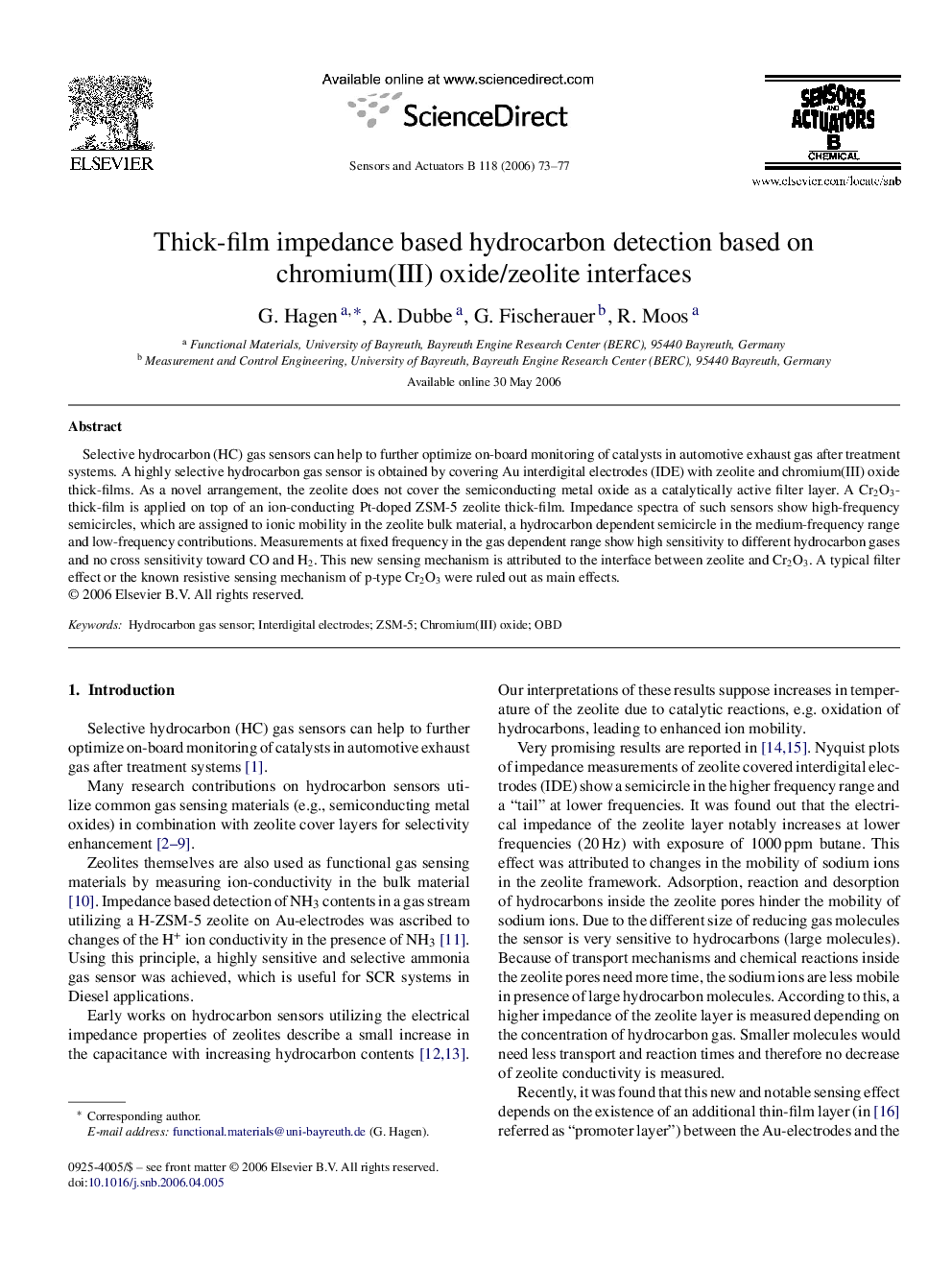| Article ID | Journal | Published Year | Pages | File Type |
|---|---|---|---|---|
| 745110 | Sensors and Actuators B: Chemical | 2006 | 5 Pages |
Selective hydrocarbon (HC) gas sensors can help to further optimize on-board monitoring of catalysts in automotive exhaust gas after treatment systems. A highly selective hydrocarbon gas sensor is obtained by covering Au interdigital electrodes (IDE) with zeolite and chromium(III) oxide thick-films. As a novel arrangement, the zeolite does not cover the semiconducting metal oxide as a catalytically active filter layer. A Cr2O3-thick-film is applied on top of an ion-conducting Pt-doped ZSM-5 zeolite thick-film. Impedance spectra of such sensors show high-frequency semicircles, which are assigned to ionic mobility in the zeolite bulk material, a hydrocarbon dependent semicircle in the medium-frequency range and low-frequency contributions. Measurements at fixed frequency in the gas dependent range show high sensitivity to different hydrocarbon gases and no cross sensitivity toward CO and H2. This new sensing mechanism is attributed to the interface between zeolite and Cr2O3. A typical filter effect or the known resistive sensing mechanism of p-type Cr2O3 were ruled out as main effects.
